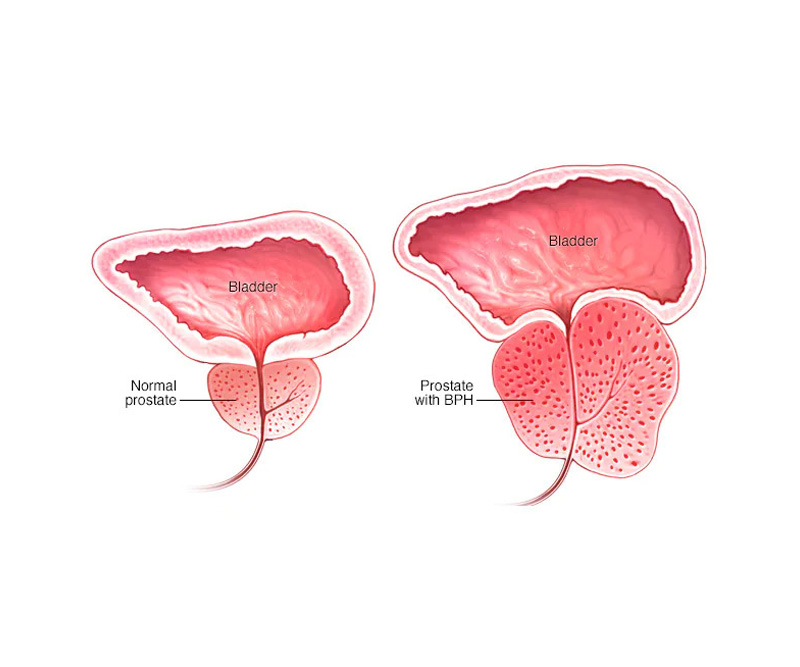Enlarged Prostate Treatment
A wide variety of treatments are available for enlarged prostate, including medication, minimally invasive therapies and surgery. The best treatment choice for you depends on several factors, including:
- The size of your prostate
- Your age
- Your overall health
- The amount of discomfort or bother you are experiencing
We strive to improve the health and wellbeing of our patients by evaluating and treating a wide range of conditions with the most up-to-date minimally invasive approaches using imaging for guidance. We are passionate about the patients we treat and we are also passionate about our specialty.
The procedure that we are offering at our center for BPH Treatment is Prostate artery Embolization.
A new minimally invasive treatment for enlarged prostate also known as BPH.
- Prostate Artery Embolization [PAE]
What is Prostate Artery Embolization [PAE]?
Prostate Artery Embolization [PAE] is a minimally invasive procedure for men who have severe symptoms of benign prostatic hyperplasia [BPH] and who have failed conservative and medical treatment. The treatment for enlarged prostate is a same-day procedure that involves placing a catheter directly into the prostate artery and injecting tiny beads to shrink a prostate of any size. The advantage of PAE over surgery is that it does not cause incontinence, bloody urine, or loss of sexual function, unlike surgery.
BPH is common in men as they age, and is a non-cancer growth of the prostate that potentially blocks or reduces the flow of urine.
Patients present with difficulty urinating and controlling the bladder. Severe cases can lead to repeated infections or dysfunction of the kidney or bladder.
If you’re searching for prostate gland enlargement treatment, let our vascular specialists help. Get in touch with us today to book a consultation and let’s discuss your options.
What Investigations for a Prostate Artery Embolization [PAE]?
For an initial evaluation, history is obtained, a physical exam and a digital rectal exam are performed. The symptom severity, quality of life, erection, and sexual function are scored. Laboratory, imaging, and urine flow examinations are ordered.
Prostate Artery Embolization PAE has long been known as an effective treatment for uncontrollable bloody urine (refractory hematuria) due to BPH or prostate cancer. Studies have shown that PAE is safe and effective with 80-90% success with respect to improving urine flow, quality of life, and erectile function.
Is Prostate Artery Embolization used for Prostate Cancer?
There is ongoing research evaluating the effectiveness of Prostate Artery Embolization with chemotherapeutic loaded beads for the adjunctive treatment of prostate cancer. This approach has been used successfully in the liver and preliminary results for use in prostate cancer are encouraging. The current treatments for prostate cancer will be discussed in another blog.
Who performs Prostate Artery Embolization PAE?
Prostate Artery Embolization should be performed by a Vascular and Interventional Radiologist who has special training because of the very complex blood supply of the prostate. In my personal experience with PAE, the results have been very encouraging.
How do I perform Prostate Artery Embolization?
I perform Prostate Artery Embolization [PAE] in the Angiography suite with local anesthesia and conscious sedation. There is no cutting involved in the PAE procedure. After patients are prepped in the pre-procedure area, they are transported to the Angiography Suite and placed on their back. Conscious sedation is initiated by the sedation nurse under my direct supervision with continuous monitoring of vital signs. I use the left wrist approach or the groin approach depending on a patient’s body habitus or preference. The patient is sterilely cleaned and draped. I numb up the skin of the wrist with local anesthetic and I puncture the artery with a tiny needle using ultrasound for guidance. After a series of exchanges, I navigate a tiny catheter directly to the prostate artery and I inject dye to see the large prostate. I inject tiny beads to block the blood flow to the prostate, in the embolization step.
After a 2 hour observation, patients are discharged home on antibiotics and anti-inflammatory medicines. The prostate shrinks and good urine flow and ejaculation are established at about 2 weeks.
What is Follow up after Prostate Artery Embolization?
Patients are advised to restrict activity for 2-3 days. Patients who had the procedure to stop hematuria (bloody urine) will have control of bleeding within 24 hours after the PAE procedure. Patients with longstanding bladder catheters can attempt removal at 15 days. Typically, improved urine flow is achieved at 2 weeks. Studies show that symptom score and urine flow at 12 months and 2 years are similar to transurethral resection of prostate [TURP] and prostatectomy.
Conclusion:
Prostate Artery Embolization [PAE] is ideal for patients seeking a minimally invasive procedure for the treatment of obstructive symptoms of BPH. PAE establishes adequate urine flows and preserves sexual function with no complications of urine leak. This option should be discussed with a patient when contemplating surgery for obstructive symptoms due to very large prostates.


we are always here to help
Get Some Advice?
We treat people, not just their illnesses
Each individual is unique, and we are aware that treatment is simply one part of what they need. At any time, our team is available to assist, inform, and reassure you as needed.
